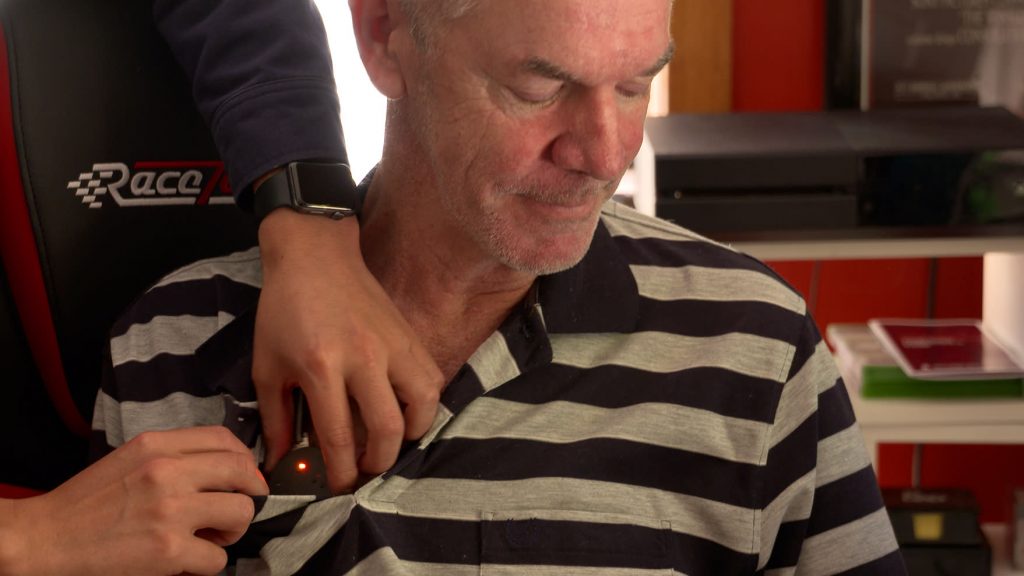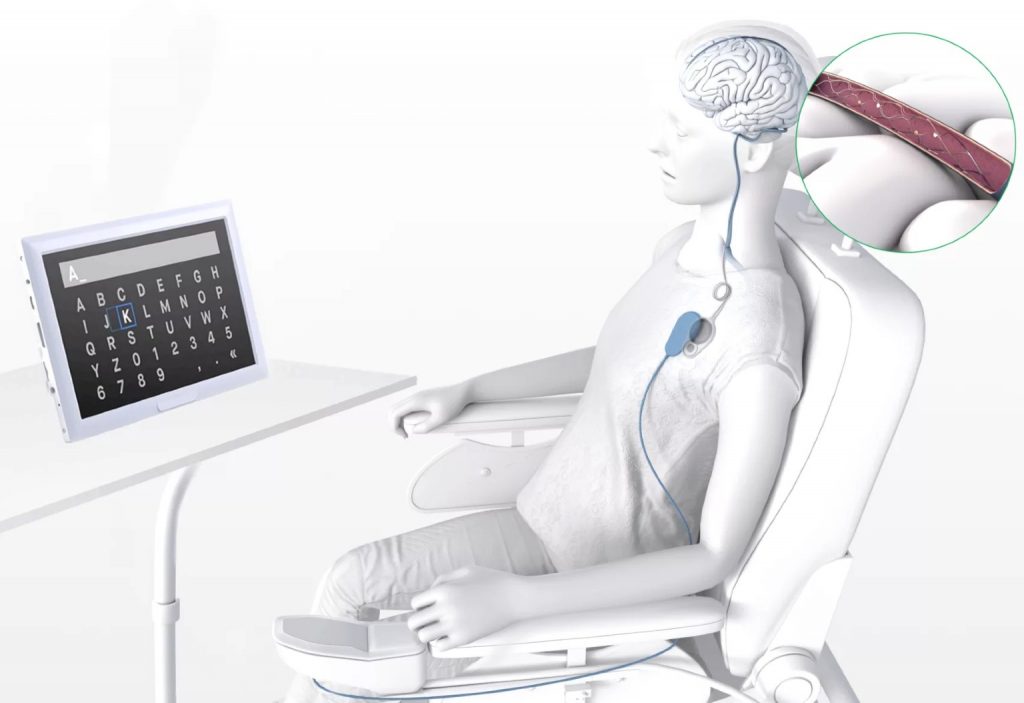A device developed by Australian engineers could help sufferers of motor neurone disease and other conditions control electronics with their thoughts.
For the past decade, engineers have been transforming the electrical impulses in the brain into signals that can, for instance, move a cursor on a screen or enter text. This technology has immense potential to expand the freedom of those with some mobility restrictions, such as people with paralysis or sufferers of motor neurone disease (MND).
However, the problem has been that recording the brain’s activity has required invasive equipment: the best signals come from electrodes inserted beneath the skull.
“They can put one or 200 penetrating electrodes — like a bed of nails — down into the brain and record an extremely high-fidelity signal,” said Professor David Grayden FIEAust, the Clifford Chair in Neural Engineering at the University of Melbourne. “They can pick up quite detailed signals from the brain, but at the expense of actually having to poke electrodes down into the brain tissue.”
Grayden is collaborating with a team of doctors and engineers looking at an alternative option. That’s a device called the Stentrode, which is being developed by researchers from the University of Melbourne and Synchron, an Australian-founded company now headquartered in New York.
Breaking convention
Grayden became involved when a neurologist he knew, Thomas Oxley, now a University of Melbourne Associate Professor, requested his expertise for a new project he was working on.
“Tom laid out this idea that he’d thought of, which was to place electrodes within the brain but without having to go through the skull by mounting the electrodes on a stent,” Grayden said. “For high-fidelity brain recordings, there’s an enormous advantage of going inside the skull. But there is this risk of having to cut somebody’s skull open and put the electrodes in, whereas this promised a way to get those electrodes in without having to open the skull at all.”
Instead, the 30 to 50 mm Stentrode is guided up the jugular vein to a blood vessel at the top of the head. “It’s called the superior sagittal sinus, which is a big blood vessel that essentially drains the blood from the brain back down to the heart through the jugular vein,” Grayden said. “[The Stentrode] is now collecting brain signals for a brain-computer interface.
Potentially for the rest of a person’s life, it is a source of data about what that person wants to do.”

The idea was unconventional, but Grayden was intrigued — it accorded with some work he had been doing aimed at stimulating the brain to predict and suppress epileptic seizures. “This is lateral thinking that means a lot of risks, a lot of unknowns at the time, but I thought this is definitely worth investigating.”
The Stentrode is similar to the stents that cardiac doctors use to treat patients with heart problems. These are self-expanding devices that can be inserted into an artery in a collapsed position and opened to form a scaffold at the appropriate location.
“What needed to be developed was a way of putting electrodes on a stent and then deploying it into the brain and then collecting those signals,” Grayden said. “There is then a wire that comes out, exits the jugular and goes to a pacemaker-like device that’s implanted under the skin in the chest, and it wirelessly transmits the signal.”
The solution: platinum electrodes attached to a stent made of a nickel-titanium alloy.
“Then once you have the data — the recorded brainwaves or the EEG signal — the decoding of that’s been a topic of research for many years … it’s largely using the existing machine-learning approaches or other approaches to decode that signal.”
That signal can be used by a patient to control a computer; by moving their eyes, a patient could move a cursor on a screen and then “click” it by thinking about moving a part of their body.
“I think it’s a good step to do it that way, because if you can control a computer then that computer can control other things,” Grayden said. “It’s enabled typing, online banking, shopping … Maybe in the future, there’ll be the possibility of controlling robotics like a robotic arm, possibly a wheelchair.”
Developing the technology involved devising a way to insulate the electrodes from the stent, which is conductive. That was solved by University of Melbourne Associate Professor Nicholas Opie, a biomedical engineer who is now Chief Technology Officer at Synchron, who glued the first working version of the device together by hand.
“The next task was how to reliably place the stent into a blood vessel and get it into the region of the brain that you really want it to go,” Grayden said. “Part of that also was to look and see how the blood vessel reacts to it over months. And it was found that the blood vessel actually encapsulates the stent — which is a good thing. So eventually it closes over and it’s as if the stent’s not there.”
Enabling independence
The technology is currently being trialled by patients who have MND, a condition that destroys neurons in the brain and causes paralysis. Clinical trials in the US have recently commenced. Grayden said that one patient in the trials required significant care from his wife.
“He asked that this device be hooked up to his mobile phone so that she could actually go out and he would be able to use the device to send her a text message if he needed her,” he said. “That extra independence and the ability for the carer to be able to take some time away — it doesn’t seem like a lot but I think it can make quite a difference.”
Other patients have been able to perform searches on the internet, write emails or conduct their banking online.
“We are working closely with the participants to ensure that our technology can be used to control computers and applications that have immediate, life-changing value to them — they want to be able to perform the activities of daily life that we take for granted,” said Opie. “It is about learning from them and how we can achieve what is of immediate value to their quality of life.”
